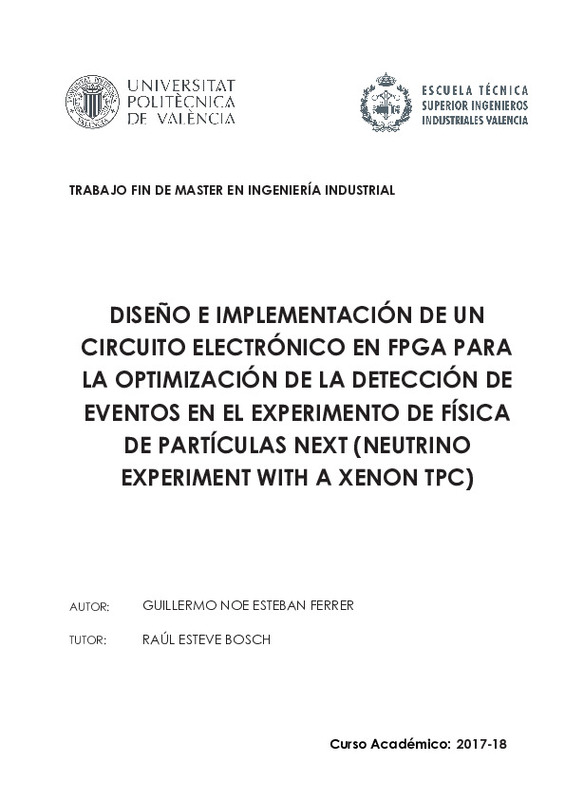JavaScript is disabled for your browser. Some features of this site may not work without it.
Buscar en RiuNet
Listar
Mi cuenta
Estadísticas
Ayuda RiuNet
Admin. UPV
Diseño e implementación de un circuito electrónico en FPGA para la optimización de la detección de eventos en el experimento de física de partículas NEXT (Neutrino Experiment with a Xenon TPC)
Mostrar el registro completo del ítem
Esteban Ferrer, G. (2018). Diseño e implementación de un circuito electrónico en FPGA para la optimización de la detección de eventos en el experimento de física de partículas NEXT (Neutrino Experiment with a Xenon TPC). http://hdl.handle.net/10251/110279
Por favor, use este identificador para citar o enlazar este ítem: http://hdl.handle.net/10251/110279
Ficheros en el ítem
Metadatos del ítem
| Título: | Diseño e implementación de un circuito electrónico en FPGA para la optimización de la detección de eventos en el experimento de física de partículas NEXT (Neutrino Experiment with a Xenon TPC) | |||
| Autor: | Esteban Ferrer, Guillermo | |||
| Director(es): | ||||
| Entidad UPV: |
|
|||
| Fecha acto/lectura: |
|
|||
| Resumen: |
[ES] El experimento NEXT pretende, mediante el estudio de la desintegración doble beta del xenón
en una cámara TPC, demostrar que el neutrino es su propia antipartícula. Para ello, se debe
estimar la energía de las ...[+]
[EN] The NEXT experiment pretends, through studying the double beta decay of xenon on a TCP
camera, to demonstrate that the neutrino is its own antiparticle. To do this, is necessary to
measure the energy of the double ...[+]
|
|||
| Palabras clave: |
|
|||
| Derechos de uso: | Reconocimiento (by) | |||
| Editorial: |
|
|||
| Titulación: |
|
|||
| Tipo: |
|
recommendations
Este ítem aparece en la(s) siguiente(s) colección(ones)
-
ETSII - Trabajos académicos [10404]
Escuela Técnica Superior de Ingenieros Industriales







